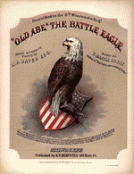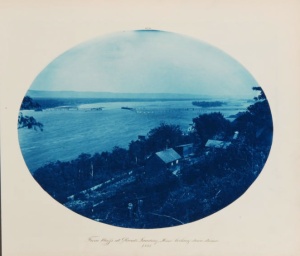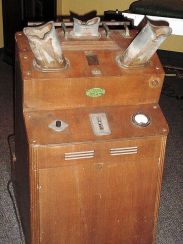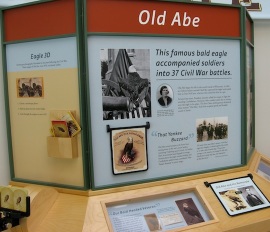Archive for the ‘Online Professional Development’ Category
Not just for History: Primary Sources in the Science and Health Classroom
Posted on: November 22, 2013
What’s a flouroscope?
I just had foot surgery! This post isn’t about my foot, but about how seeing the pre-op x-ray results on a large computer screen and later seeing the post-op results led to an interesting conversation. I suppose the last time I saw those bones I was standing on a fluoroscope in a department store’s shoe department. The nurse did not know what I was talking about. I told her how fun it was to stand on the machine even if we weren’t in the store to buy shoes. Fluoroscopes were used in shoe stores so parents and sales people could view a child’s feet have long since been taken out of use because of dangers from radiation. Modern fluoroscopes are still used in certain situations.
A technical college x-ray tech instructor came up with a great activity when she discovered historic photos of x-ray equipment , historic newspaper articles about x-rays in court trials, and posters warning about the dangers of x-rays and radiation. There is a picture of a doctor taking a radiographic image. The equipment and patient protection are outdated. Learners can analyze the photo and reflect on the changes that have been made with regard to the equipment and protections standards we use today. It would be a great way to start a group discussion.
An elementary teacher found primary source photos of simple machines. Her ideas was asking students to identify the machines to share and review their knowledge this basic scientific concepts.
Primary sources are not just for history! Two November blog posts, Asteroid Impostors and the Planet that Never Was: What’s on Your Diagram of the Solar System? and Exploring Eclipes through primary Sources highlight selected astronomy primary sources resources and ideas.
The Jan/Feb 2014 Internet @Schools NEW Media Center Column (An article version of this post)
Primary sources offer exciting possibilities for the science and health classrooms.
Learn how to find and use them in your classroom!
Learn more from science teacher
References
American Memory Collections
Library of Congress Teachers Page Blog
National Museum of Health and Medicine
YouTube, Shoe Store Fluoroscope
Oak Ridge Associated Universities, Shoe Fitting Fluoroscopes
Susan Buss, June 2013
Photo: Shoe Fluoroscope, manufactured circa 1938, manufactured by Adrian Shoe Fitter, Inc. that was used in a Washington, DC Shoe Store. This machine is currently displayed at the National Museum of Health and Medicine in Washington, DC.
Can I use the Library of Congress Professional Development Materials to develop my own PD?
Posted on: July 18, 2013
Absolutely! A media specialist just asked about the logistics of using Library of Congress professional development resources to deliver professional development in her own school! The Teachers Page Build and Deliver materials and the Interactive Online Modules were both developed for that very purpose.
The PDF Build and Deliver files, along with the highly interactive multimedia materials, will help teachers and media specialists learn how to search and use The Library of Congress American Memory Collections effectively. Both PD formats have extensive selections of professional development resources that educators can use individually or to teach others. These resources are ready to use and free!
Engaging Students Through Photos, my guest post on Julie Greller’s Media Specialists Guide to the Internet blog, describes adult learners participating in a photo analysis activity using Lincoln’s Pockets, a Build and Deliver Module. You will also learn a bit about ready-to-use Primary Source Sets and Primary Source Analysis Tools. The Power of Primary Sources tab above has journal articles on these PD tools.
Overwhelmed! It’s a typical response of first-time use of the Library of Congress American Memory Collections. Educators want to use primary sources, state standards require their use, and they are a good match for inquiry learning and reading informational text.
But where should a short-of-time educator start? Starting small using a single resource that fits with the course content along with a primary source analysis tool is one easy way.
The American Memory Teachers Page has practical Teachers  Guides and Analysis Tools that work with all ages of students and in all content areas. A”generic” teachers guide describes a basic in a 3-step process: Observe, Reflect, Question. A blank student tool is ready for you to download.
Guides and Analysis Tools that work with all ages of students and in all content areas. A”generic” teachers guide describes a basic in a 3-step process: Observe, Reflect, Question. A blank student tool is ready for you to download.
Tools are available for specific primary source formats including printed text, manuscripts, maps, motion pictures, oral histories, photographs, political cartoons, sheet music and sound recordings.
Primary source analysis is valuable in many ways: 1. It helps students meet a content objective while using an authentic primary resource 2. Analysis requires students to apply skills that can be transferred to other situations 3. Analysis doesn’t have to take a lot of time!
Start small; encourage big thinking!
List of primary source collections (or select the tab at the top)
Learn more about primary source analysis. Teaching Digital Media Literacy in the Content Areas: Using Primary Sources .
A while ago I joined students on a field trip to the National Eagle Center in Wabasha, Minnesota. We enjoyed a presentation featuring live eagles and learned about conversation and the eagle as our national symbol. Old Abe, the Wisconsin War Eagle is the subject of a special display. The field trip was ideal for a short follow-up activity to learn more about the mascot of the Wisconsin 8th regiment. Abe perched atop a staff during battles. After the war Abe lived in the Capitol Basement; he later died from lingering injuries he suffered in a Capitol fire. Abe’s taxidermied body burned in another fire. Students learned how Abe was honored in
Old Abe the battle eagle song & chorus poetry and identified states a Historic Eagle Map of the United States.
 It was a great teaching moment in the media center!
It was a great teaching moment in the media center!
Civil War era music is easy to find in American Memory Collections. Start with:
Civil War Band Music
Nineteenth Century Song Sheets
Historic American Sheet Music, 1850 – 1920
African-American Sheet Music, 1850-1920
The Alfred Whital Stern Collection of Lincolniana
Learn how to use and other Civil War era resources to develop engaging, critical thinking activities for students
Teaching Digital Media Literacy in the Content Areas: Using Primary Sources
This class changed my teaching forever. It was powerful!
Congratulations to science teacher Stacey Balbach who will be speaking about Primary Sources Science at the
National Science Teachers Convention in March 2012. Way to go!
When she was a student in Teaching With Primary Sources, a Wisconsin science teacher discovered primary sources are not just for history or serious researchers. Primary sources can enhance student learning throughout all content areas and for for students of all ages. She used Leonardo DaVinci’s journals and notes help students understand the importance of scientific observation and note-taking. The science teacher discovered that Primary sources are exciting from the point of a chemist or physicist. ” With the new accessibility of the sources really the opportunities for teachers are endless. The sky is the limit. Really you can build any type of multifaceted project that you want ”
A health/science teacher used maps depicting the spread if diseases as the United States expanded westward to the study of today’s infectious diseases. She connected the health curriculum to literature by reading Peg Kehret’s Small Steps: The Year I Got Polio to her students.
A middle level teacher was excited to learn how she could use primary sources to help teach resource validity and overall literacy. Instruction became more student-centered, there was a high level of student engagement, and students developed a deeper meaning of the subject matter because of increased accessibility to primary sources. She concluded, by learning how to locate and use primary sources I was reminded of what my responsibility is as an educator: to increase student achievement and understanding. By failing to incorporate primary sources, I fail my students.
The next Teaching Digital Media Literacy in the Content Areas: Using Primary Sources course begins soon.
See what former other students have to say.
Register Online: http://www.uwstout.edu/soe/profdev/register.cfm
Off the beaten path
Posted on: November 13, 2011

From Bluffs at Reads Landing, Minnesota looking down stream, 1885. U.S. Army Corps of Engineers, St. Paul Minnesota Reflections
Yesterday’s trip to the Reads Landing Brewing Company turned out to be a history lesson. We’ve driven through the Mississippi River town of Reads Landing countless times, but hadn’t ever turned off Highway 61. First stop: the Wabasha County Historical Society. The museum’s brochure describes the building, built in 1870, is the oldest schoolhouse in Minnesota. Initials of hundreds of students carved in the school’s walls. The museum’s old barn holds old agricultural machinery used in the early days of Wabasha County.
Reads Landing now is now home to 100 people, but in “its day “ as the landing spot for thousands of rafts hauling lumber down the Mississippi River. There were 17 hotels, 21 salons, and 15 stores.
A remaining brick storefront building is home to the Reads Landing Brewing Company. Like many businesses of its type, it has its own history and displays reproductions of historical photos on the walls. A window seat gave us a great view of U.S. Army Corps of Engineers Mississippi River dredging in action. Reads Landing is a short drive from National Eagle Center in Wabasha.
Photo: From Bluffs at Reads Landing, Minnesota looking down stream, 1885, Henry Bosse, Creator. Minnesota Reflections, Minnesota Digital Library
Primary sources are all around us! What’s in your backyard? Teaching with Primary Sources, Digital Media Literacy in the Content Areas starts Jan.23.
Ignorance is Bliss
Posted on: October 21, 2011

What’s the connection between the phrase ignorance is bliss, Alexander Graham Bell’s induction device, the insanity plea, an apparatus used to treat polio patients, and the assassination of President James Garfield? What son of a famous American was present at both Garfield’s assassination attempt and President McKinley’s? It’s all in Candice Millard’s incredibly fascinating and very readable book Destiny of the Republic: A Tale of Madness, Medicine and the Murder of a President.
When I read historical fiction or non-fiction like Destiny of the Republic, I have fun discovering more about the supporting facts and the primary sources the author used for research. Millard relied extensively on resources held in collections at the Library of Congress, The Smithsonian, the Alexander Graham Bell papers, Garfield’s Ohio library (the first presidential library! ) and many more. Notes , primary source illustrations and bibliographic information comprise 25% of the book!
I do Solemnly Swear: The Inauguration of James Garfield
Life and Death in the White House
Map of Washington DC and Photos relating to the Assassination
Learn how to use primary sources like these! Teaching with Primary Sources, Digital Media Literacy in the Content Areas
Doors Open Milwaukee, an event planned to get people into over 100 historic buildings, museums, corporate offices, hotels, breweries, homes and more is happening this weekend. The exciting event is an opportunity for folks to see places we don’t always take the time to visit and learn about their community. The organizers describe Doors Open Milwaukee as ” like getting a free backstage pass to areas you seldom see – from U.S. Bank’s 41st floor observation deck to Bradley Center locker rooms, from behind the curtains at the Pabst Theater to an up-close look at the Jones Island Water Reclamation Facility to see how Milorganite is made.” http://doorsopenmilwaukee.org/ Kathleen Dunn discussed the event with listeners on her September 23 Wisconsin Public Radio program.
It’s local history on parade! Primary sources are right around the corner!
What’s in your backyard? What can your back yard treasures add to your classroom and student learning?
Teaching with Primary Sources
A university student’s eyes lit up when I said I taught a course for teachers on using primary sources in the classroom!
I learned about them in high school; I’m glad I did; my university professors expect us to know how to find them and use them for research. I wish we had used them more in high school; they would help me write better. It’s like being a detective!
Thanks, Megan! You are so right.
Primary sources are all around us in our homes and communities. They bring learning to life; they add meaning to our experiences and learning. State standards require students to use primary sources. The Eagle Map of the United States added excitement and enthusiasm to a 4th grade teaching activity I created — and it was a perfect match for current classroom activities. We all had fun learning.Treasures like these are now more accessible and exciting than ever thanks to ever expanding digitalization.
How can I find appropriate resources? What do I do with them?
We have a course to help you! Check us out!
Teaching with Primary Sources begins soon!
Comments from Past Students
Register Online: http://www.uwstout.edu/soe/profdev/
Eagle Map of the United States, Library of Congress, Geography and Map Division, http://hdl.loc.gov/loc.gmd/g3700.np000151

Tramp! Tramp! Tramp! the prisoner's hope. Sheet music. America Singing, Nineteenth Century Song Sheets
Tramp! Tramp! Tramp! Musicians from Wisconsin’s First Brigade Band brought 150 year-old Civil War brass instruments, a drum, stories, and songs to the Winona County History Center and made the Civil War come alive at an August program. We heard the sounds and stories of brass instruments representing over 200 in a collection at a Watertown, Wisconsin museum. A coffin case lined with butternut denim was used to store one instrument; another was saved from theft when a Union soldier wrapped it in his bedroll as he was taken prisoner. The musicians sang songs such as “America,” “Tramp, Tramp, Tramp ” and “Hamilton’s Badger Boys,” a song whose appearance coincided with the Battle of Bull Run.
President Lincoln greeted the audience; a local Civil War expert read letters from Winona residents including Charley Goddard who served in Minnesota’s Company K and fought at the Battle of Gettysburg (Goddard is the central character in Gary Paulsen’s young adult novel A Soldier’s Heart.) The program ended with the arrival of pork and bean cake and hardtack.
Music from two Library of Congress collections, Civil War Band Music and Nineteenth Century Song Sheets can help you help your students connect with the Civil War. Learn how to find and use music, letters, photos, maps and stories to develop engaging, critical thinking activities!
Teaching with Primary Sources, an online class for teachers of all content areas and students of all ages
begins the end of September.
Register Online: http://www.uwstout.edu/soe/profdev/register.cfm
Comments from past students
“2/3 of teachers believe digital resources help them differentiate learning for individual students.” Teachers also like short video segments and believe videos stimulate discussion video comment stimulate discussion. <Eschool News March 2011 >
The Library of Congress American Memory Collections have videos  ranging from the Coca Cola Advertising Collection to Early Edison films and Presidents. Did you know some “historic films were staged? Some films about the 19-06 San Francisco Earthquake will challenge your students critical viewing and thinking skills.
ranging from the Coca Cola Advertising Collection to Early Edison films and Presidents. Did you know some “historic films were staged? Some films about the 19-06 San Francisco Earthquake will challenge your students critical viewing and thinking skills.
Is Seeing Believing?
There are exciting possibilities for using these films in economics, humanities, mass communications, science and history curriculum. Learn more about using free digital resources in Teaching with Primary Sources, an online class for teachers of all content areas and students ages. The course is an elective in the Master of Science in Education program.
Register Online: http://www.uwstout.edu/soe/profdev/register.cfm
Comments from past students
A history teacher in Louisiana incorporated primary source photographs, newspapers, and maps into a lesson during the first week of school. Students were required to read Killer Angels, Michael Shaara’s Pulitzer Prize winning account of the Battle of Gettysburg over the summer. She wrote:
I allowed my first period class today to start the anticipatory set I had assigned for homework in the last few minutes of class. They got so into it! Between mocking Burnside’s facial hair, talking about the names, talking about the autographs – they really – without knowing it – started to get excited about primary documents! It was great! . . . . . .[Later that day] the first fire drill of the year occurred. As we were standing outside, waiting for the all clear, the vice principal came over to tell me that some of my students were gathered together and were talking about all the cool stuff they had learned that morning about Gettysburg! I swear I nearly cried.That is the reason we teach!
(Used with permission from Robin Vogt, Newman School, New Orleans,)
Learn more about Teaching with Primary Sources, an online class for teachers of all content areas and students of all ages.
Register Online: http://www.uwstout.edu/soe/profdev/register.cfm
Comments from past students
New York Tribune, July 1, 1863.
Chronicling America: Historic American Newspapers, Library of Congress






You must be logged in to post a comment.